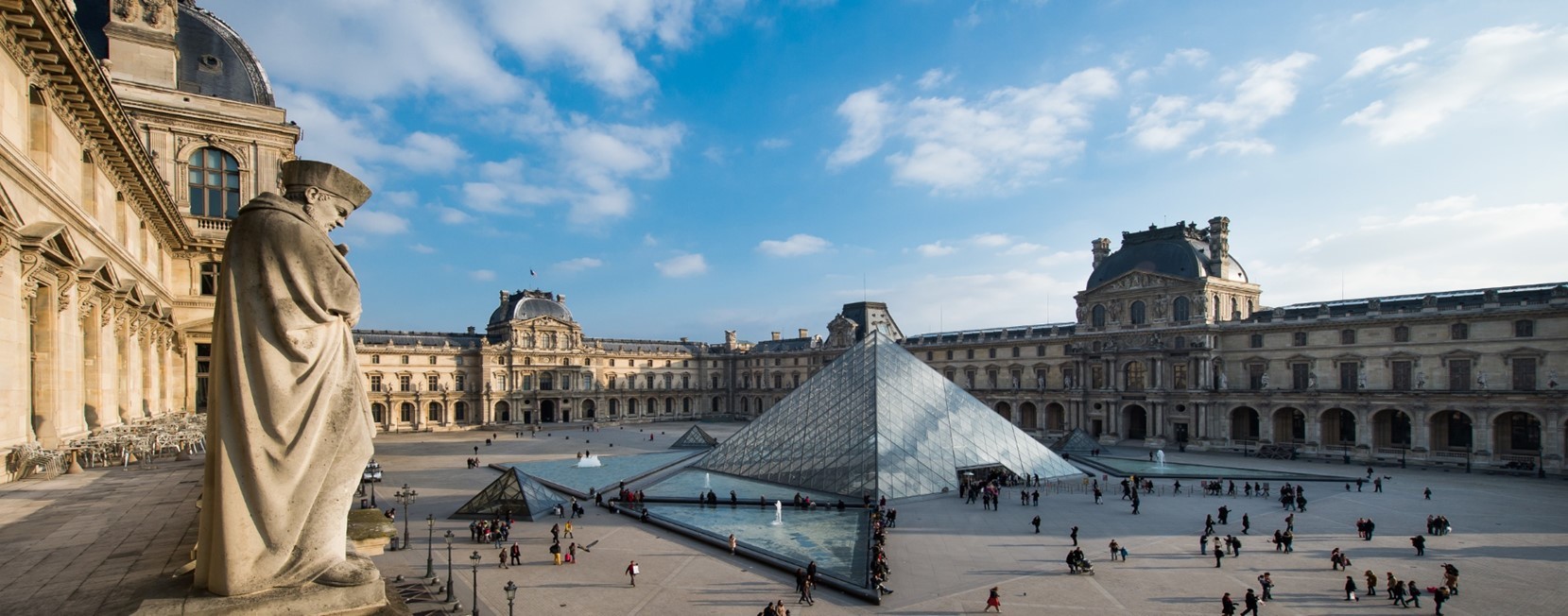Maximilien Durand, born in 1976, is a graduate of the École du Louvre and holds a Master’s degree from the École Pratique des Hautes Études for his research on the hagiographic texts preserved in the Louvre’s Department of Egyptian Antiquities. From 2007 to 2008, he was Scientific Director of the NGO Patrimoine sans Frontières (‘Heritage without Borders’). In 2008, he joined the Musée des Arts Décoratifs in Paris as Head of Conservation and Restoration, and from 2011 to 2017 he was Director of the Musée des Tissus et des Arts Décoratifs in Lyon. From 2018 to 2019, he was Head of Conservation for Christian Dior Couture, and from January 2021 was Deputy Director of Collections and Research at Paris Musées, in parallel to his role as Curator of the Paris catacombs.
Maximilien Durand is also a professor at the École du Louvre and the author of numerous publications, and has organised over twenty-five exhibitions, notably Antinoopolis: Beyond Life, Beyond Fashion. Shadows of Elegance in the Desert at the Musée des Tissus in Lyon in 2013–14. He has held the offices of Vice-President of the Centre International d’Étude des Textiles Anciens (CIETA) and President of the International Association for the Study of Silk Road Textiles. He has also conducted international projects on the conservation, restoration and enhancement of the cultural heritage of Orthodox communities of Byzantine tradition, particularly in regions within the geographical scope of the future department: Albania, Kosovo, Macedonia, Serbia, Belarus and Russia. He also completed a scientific study of the Byzantine and Coptic textile collections at the Cotsen Foundation in Los Angeles.
As Project Director, Maximilien Durand will be responsible for defining the scientific and cultural project of the Louvre’s future Department of Byzantine and Eastern Christian Art, proposing its layout and display and overseeing its implementation in tandem with the architectural team (to be selected by an international competition). He will also lead the project team and participate in the new department’s communication and information strategy.
A Scientific Committee headed by Jannic Durand, Director of the Louvre’s Department of Decorative Arts, will be established to provide the Project Director with supplementary expertise.
Creation of the Department of Byzantine and Eastern Christian Art, the Louvre’s ninth curatorial department
The Louvre’s President-Director Laurence des Cars announced the creation of the museum’s ninth curatorial department when she took office. This decision, approved by the Louvre’s Board of Directors in November 2021, is a landmark event intended to meet the museum’s goals in terms of scientific strategy, collection management and enhancement, and presentation to the public.
Byzantine and Eastern Christian art forms a coherent art-historical ensemble, recognised as such by the scientific community. The Louvre’s new department is intended to bring together over 12,000 artworks currently dispersed across seven departments. The museum’s collections in this field are among the finest in the world, ranging from the beginnings of Christian imagery to the 19th century. Key works such as the Bawit monastery, the Emesa vase, the Barberini ivory and the lapis lazuli icon from the Treasury of Saint Denis are currently on public display, but lack a meaningful presentation space illuminating their artistic and historical context. Grouping these works together in a coherent and identified space directly linked to the museum’s other departments will shed light on the connection with the late Greco-Roman world, the flourishing of Byzantine art, and its endurance in a region where the Islamic civilisation also flourished. The department’s reach will also extend to Eastern Europe and Russia.
Showcasing these cultural and artistic exchanges, the new department will be set up in the Denon wing at the intersection of the galleries showing Egyptian antiquities, Greek, Etruscan and Roman antiquities, and Islamic art. With its modernised layout and interpretation resources, the Department of Byzantine and Eastern Christian Art aims to create an informative and engaging display that will provide visitors with the historical keys to this cultural and geographic area.
The first visitors should be able to discover these new rooms by 2025.

